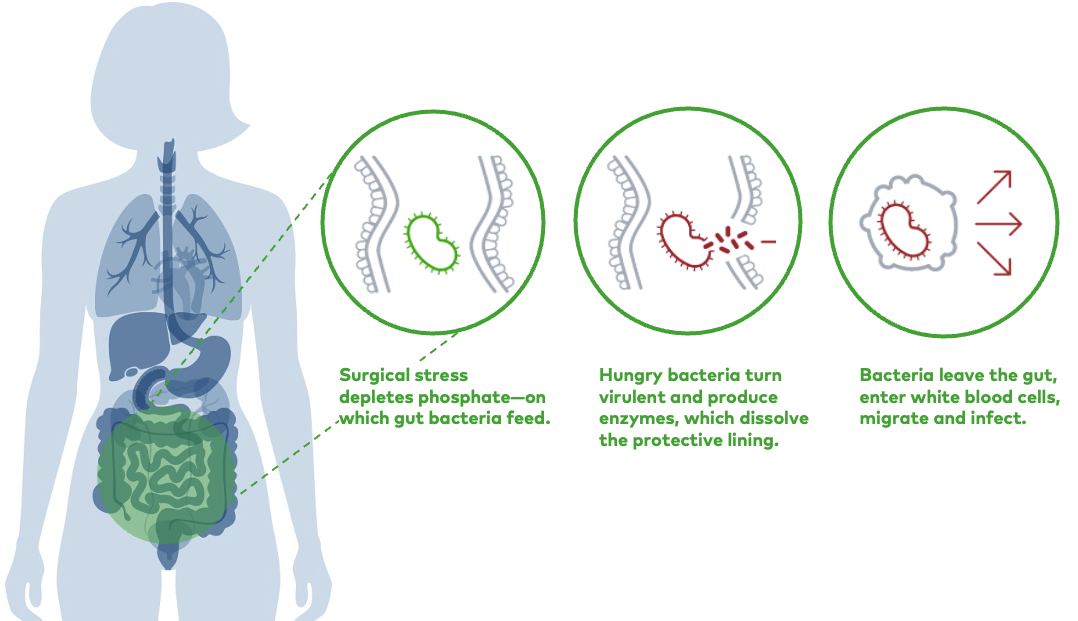Covira’s platform technology modulates the gut microbiome to prevent disease.
What’s the cause of post-operative surgical site infections?
Dr. Alverdy has been on a 30-year journey to develop an effective product that prevents virulence from the gut microbiome.
1990
Dr. Alverdy links diet and intestinal microbiome composition in rats, laying the groundwork for future microbiome research
1994
Microbiome work continues with exploration of bacterial adherence on intestinal permeability after dexamethasone exposure
2001
Dr. Alverdy shows how intestinal E. coli shift phenotypes after surgical stress; the foundation for Pi-PEGs effects is laid
2006
Multi-drug resistant P. aeruginosa strains are identified as disruptive to intestinal lining
2008—2009
Breakthrough – 20 years later, Dr. Alverdy shows lack of phosphate causes sepsis via P. aeruginosa virulence, links this to bacterial phosphate sensing, and creates a working model using C. elegans (nematodes)
2012—2014
The link between surgical injury and bacterial virulence is validated further (C. albicans and P. aeruginosa); anastomotic injury similarly changes the microbiome
2014
Pi-PEG First Arrives—Pi-PEG results in a sepsis mouse model are published, inhibiting virulence of multiple bacterial strains, the result of ~25 years of work
2018
Dr. Alverdy and team demonstrate that Pi-PEG also suppresses bacterial virulence and prevents injury in AL models, with further iteration to Pi-PEG formulation
2021
With lead compound optimized for SSI and AL, Pi-PEG is ready for human trials and revolutionizing gut microbiome virulence

